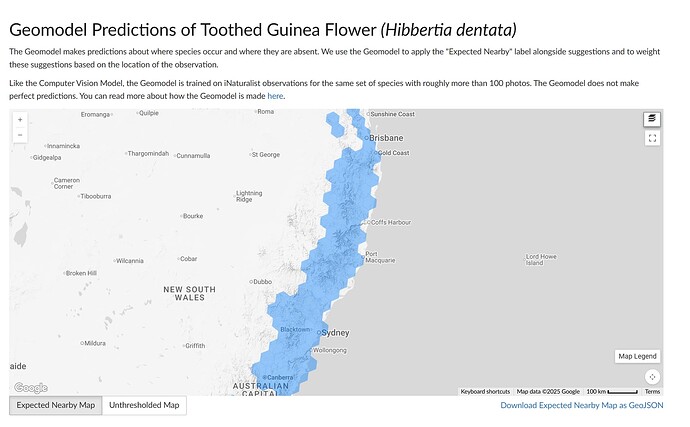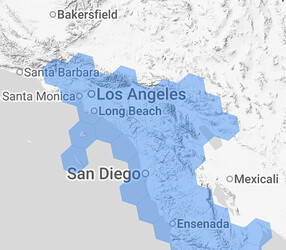100%. I don’t know if there is a feature request for this, but it would definitely help reduce the issues of species being shown as “expected nearby” when they don’t even occur on the same continent. Clipping the geomodel maps to some reasonable buffer (100 km?) around existing Research Grade observations would be a good step.
as a similar, frustrating example to the Bossiaea stephensonii one I raised above, here is the current expected nearby map for Hibbertia dentata:
there are hundreds of RG observations from all of those coastal cells that are currently being excluded, many of them that have been in iNat for years
Who has inherited this? Since Alex is no longer iNat staff.
@dianastuder please see my post here.
We just released an update to the model and we’ve gone back to using the grid approach. The maps are looking overall better to me, eg for Hibbertia dentata this the new map, which covers the coast:
In the previous model this coastal observation was not getting a Hibbertia dentata suggestion but it is now, which is good.
The Crotalus ruber map is also tighter and doesn’t go way far north out of range for the species like the last version did.
But like any model it’s still not perfect and the observation in the OP here is now again just outside the expected nearby range. We’ll keep working on improving it. I suspect a lot of the San Jacinto problems have to do with both the area’s extreme changes in elevation and an unlucky placement of grid cells in the area.
Yes - thank you - have been waiting for that CV update.
We currently live in a hexagonal world…with all its joys and warts.
My Cape Peninsula has regained the Hout Bay hexagon, which is mostly South Atlantic Ocean. ![]()
Hexagons are the Bestagons
6 posts were split to a new topic: How do Computer Vision results get sorted in the Suggestions/Compare Pop-ups?



